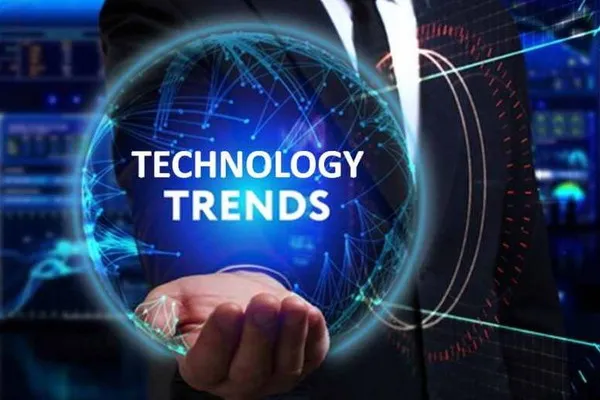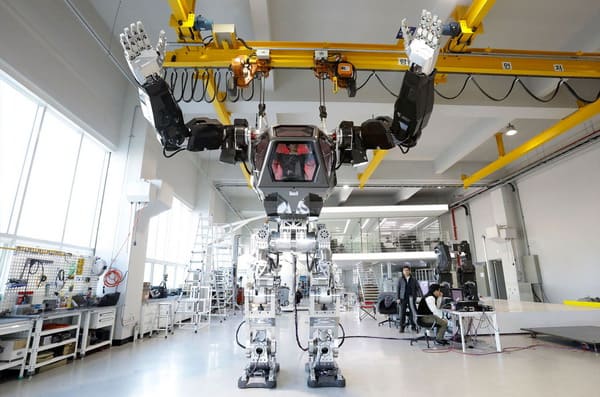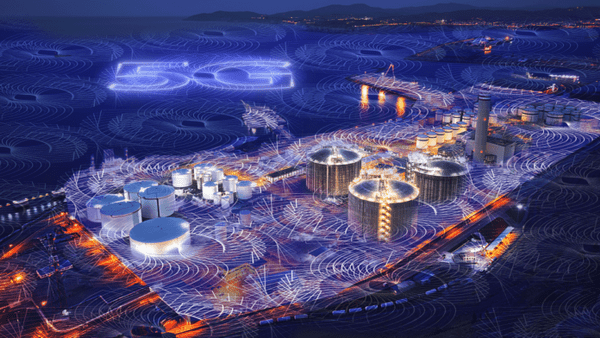In this new post review, we present a comprehensive outlook on the top emerging technology trends that will be enabled and implemented in 2024. The trend forecast will give us an idea of how the pioneers and innovators of new technologies will shape our lives in the future.
14 key technology trends in 2024 that are important for entrepreneurs to pay attention to:
Democratization of artificial intelligence (AI)
Few innovations have generated as much growth and interest as artificial intelligence (AI) over the past few years. Artificial intelligence technology is making its way into finance, healthcare, manufacturing, and dozens of other industries. The level of AI adoption today is 2.5 times higher than in 2017: about 50% of organizations have implemented AI for at least one business function.
And this technology is no longer just for large companies, AI is available to everyone. With open source AI solutions and lower cost and system complexity, the democratization of AI is in full swing.
- A prime example is OpenAI, an artificial intelligence research company. It is currently worth $29 billion, and the company expects to reach $1 billion in revenue by 2024.
ChatGPT by OpenAI surprised the world when it was released in November 2022. The ability of a chatbot to accept natural language prompts and generate conversational text for a variety of outcomes has made people rethink the possibilities of AI. Over 100 million people used ChatGPT within the first two months of its release.
ChatGPT is one of the most sensational future trends in the tech industry. It made a splash in the world of automated chatbots thanks to its seamless GPT3 technology, an autoregressive language model that gives AI “human capabilities” to understand and create texts.
In addition, with the help of deep learning, ChatGPT can generate images from text clues, solve math equations, and perform a variety of writing tasks, from finding smart video titles to writing poetry.
Following ChatGPT, Google launched its own AI chatbot called Bard. Microsoft has also released a Bing chatbot that uses OpenAI technology. Even Meta is joining the AI race and planning to release its large language meta model to professionals in government, academia and research.
This type of natural language technology has the potential to revolutionize business operations.
For example, help desk reps can use it to respond to customer inquiries in seconds. Companies can use it to create personalized marketing and educational content without having to hire copywriters. Developers can use it to write complex code and business leaders can use it to analyze data.
Cyber threats are getting more advanced
Cybercrime is a constant and growing threat, from attacks on casual consumers to state-sponsored cyber warfare. A 2022 Hiscox global survey found that 43% of companies reported a cyberattack in 2021 and 48% reported at least one in 2022.
The most frightening statistic from this report was the fact that 20% of the organizations attacked said the cost of the damage threatened their ability to pay. Some projections show that a single data breach will cost an average of $5 million in 2024. According to IBM research, this amount is even higher: $9.44 million.
In fact, cybercrime has become so pervasive that the $155 billion cybersecurity industry is projected to grow to $376 billion by 2029, according to analysts and experts.
Deepfake attacks are one of the most sophisticated ways hackers gain access to a business. In a 2022 survey by VMware, 66% of participating CIOs said they experienced deepfake attacks in the last 12 months. This is 13% more than in 2021.
Deepfake technology uses AI/deep learning to create convincing videos, images and audio of fake events and people. This technology has been around for a few years now and it just keeps getting better and better for hackers.
A type of machine learning technology called generative adversarial networks makes deepfake models nearly impossible to detect. In addition, the advent of 5G networks makes real-time video management easier.
Deepfakes are especially useful for cybercriminals who commit BEC (Business Email Compromise) scams. Manipulating face-to-face verification methods with deepfakes is another opportunity for cybercriminals.
Spotting deepfakes and other incoming threats is largely a defensive game for organizations. Security professionals are always one step behind intruders. However, cybersecurity professionals use artificial intelligence and other advanced technological solutions as early as possible to detect and stop attacks.
A 2022 IBM report found that organizations that use AI tools along with automation shorten the hacking life cycle by 74 days and save $3 million compared to those that do not use these cybersecurity solutions.
Not only can AI tools recognize attacks before human operators can, they can also be configured to stop an attack and alert IT staff before the breach gets out of control.
Ambient Computing Enables Nearly Invisible Technologies
Ambient Computing is an IoT-based concept that promises a future of near-invisible technologies. And here’s why: in background computing, an AI-driven network of devices and software runs in the background (around us) with little or no human intervention.
- Ambient computing uses both artificial intelligence and machine learning to interpret data collected from physical devices such as smart thermometers and smartwatches and make decisions on its own.
All of these technologies combine to create devices that can interact with both humans and other devices.
With the potential to change the way we interact with everything from coffee makers to trucks, it’s no surprise that the ambient intelligence industry is expected to grow at an impressive 32% CAGR through 2028 and reach a total value of $225 billion.
Ambient or External Computing is still a young technology, but use cases are already being seen in both consumer-facing and business solutions.
Voice assistants and smartphone-controlled thermostats are great examples of ambient computing, but the technology could become even more subtle.
For example, a person getting off an airplane can be automatically alerted that their luggage is ready at a particular carousel. After the luggage is collected, they will receive another notification that their rideshare is ready at a specific location. While they were in the car, the nearest Starbucks automatically ordered coffee, they automatically checked into the hotel.
Otherwise, homeowners may no longer need garage door openers. Instead, the owner’s smartphone will relay the location to the home device, which will open the garage door for them when they get close.
In factories, ambient computing is used to monitor and schedule machine maintenance.
When an IoT device recognizes that a machine needs maintenance, it contacts the maintenance scheduling software and schedules that machine.
In retail, shelf sensors can automatically order new stock when stock runs out.
However, as this technology develops, privacy and security issues will be paramount.
Using Low-Code or No-Code AI
In 2024, artificial intelligence (AI) will shed its tech jargon and use simple drag-and-drop interfaces, leading to code-free AI. Now everyone uses computers without understanding the background programming of operating systems. Similarly, AI operations and decisions will become more functional, and programmers will not have to write a single line of code.
Its growing acceptance among non-specialists will enable more industries to take full advantage of AI-based intelligence and create smarter products. Codeless AI has already penetrated the market with its user-friendly interfaces in various fields such as retail and website development.
By combining visual models with AI-based tools, LCNC software developers can skip or at least speed up the time-consuming process of writing thousands of lines of code from scratch.
Because LCNC solutions are designed to be user-friendly, an increasing number of non-developers can also create programs. These non-IT employees are referred to as “civil developers”. Gartner predicts that large enterprises will soon have four times as many civilian developers as professional developers.
An Infragistics survey showed that over 76% of organizations are already using LCNC. Another proof of the rapid growth in popularity is the growth of the low-code market. It is expected to rise to $27 billion in 2024, up 20% from 2022.
LCNC solutions are based on so-called Low Code Application Platforms (LCAPs).
These platforms are component based and offer predefined templates.
Marketing in the Metaverse
Bloomberg’s 2021 analysis says that the Metaverse market will reach a staggering $800 billion by 2024. The Metaverse is a virtual 3D simulation where people can interact with each other across multiple platforms. In the age of Internet 3.0, advertisers are realizing the endless marketing possibilities of this immersive experience, making it a source of brand awareness and engagement.
Brands like Nikeland are already tracking choices and consumption patterns in their metaverse stores using various forms of artificial intelligence and virtual reality (VR). Others, too, are looking to enhance the user experience by connecting their physical stores to the metaverse via QR codes.
Augmented reality goes beyond entertainment
As the lines between mixed reality, augmented reality, and virtual reality blur, the term “augmented reality” has become an umbrella term covering all of the above and more.
In the next few years, augmented reality will have potential applications in everything from the metaverse to virtual concerts.
First, there are several B2B use cases where augmented reality can lead to major innovation. Particularly in the medical field. In just one application, augmented reality is being used to train both new and existing surgeons.
This technology can prove very useful in helping surgeons understand the intricacies of new, innovative surgeries that they may not have known about in school or in previous positions.
A study in clinical orthopedics and related research has shown that virtual reality training significantly improves the accuracy of surgery and speed of completion. Another study showed that virtual reality training improved surgical efficiency by 230%.
The automotive and manufacturing industries are two other sectors where augmented reality is expected to make an impact in the coming years. Technicians in these industries are required to carry out very complex processes and machine work.
Because of this, augmented reality technology can be used to provide a detailed, first-person view of these processes in a secure environment where errors can be easily corrected. When technicians can practice assembly processes before stepping on the actual line, human error and injury can be prevented.
Digital immune systems
The list of technology trends in 2024 would be incomplete without the introduction of the digital immune system (DIS). This system refers to the entire architecture of methods borrowed from software design, automation, development, operations, and analytics. It aims to reduce business risk by neutralizing system defects, threats, and vulnerabilities to improve the overall customer experience.
The importance of DIS lies in automating various elements of a software system so that it successfully fends off all sorts of virtual threats. Gartner analysts predict that by 2025, companies already implementing DIS will reduce customer downtime by about 80%.
Robotic Process Automation (RPA) Adoption Will Continue to Grow
As the lines between artificial intelligence and machine learning continue to blur, companies are finding more and more ways to integrate automation into their processes. And one of the new technologies that executives are most excited about is robotic process automation (RPA).
RPA involves training programs to perform or perform routine, repetitive tasks.
Forecasts predict that the global RPA market will grow to $25 billion by 2030 at a CAGR of nearly 36%.
RPA software spending reached nearly $3 billion in 2022, up 21% from 2021. Surveys show that a fifth of enterprises are currently using RPA.
One of the main reasons businesses are adopting RPA is due to the tight labor market and the need to maximize employee efficiency and productivity. The data shows that the average US company with 500 employees loses more than $1.4 million annually due to wasting time on repetitive tasks.
RPA solutions can also save time and money when it comes to low-value, routine business tasks. For example, when RPA is copying and pasting information from a document into a database, the process is faster and the results have a higher level of accuracy than when the task is performed by humans.
Estimates show that RPA can increase job capacity by as much as 50%. Not to mention that highly valuable human talent can be applied to another task.
RPA can also be used to extract data from websites, book appointments, gather information from customers, monitor compliance, and engage employees, just to name a few.
Hyperautomation
According to a PRNewsWite 2021 report, hyperautomation market share will grow to $26.5 billion by 2028, and a Salesforce report predicts that at least 80% of organizations worldwide will move to hyperautomation to optimize performance and improve customer satisfaction.
Hyper-automation is the key combination of all the latest innovation tools such as:
- AI without code;
- Business management platforms and automated workflows;
- Integration platforms;
- Intelligent document processing;
- Natural language processing;
- Robotic process automation;
- Process display tools.
Increasing innovation and investment in clean green technologies
In 2021 alone, climate technology startups have raised almost $40 billion to fight the effects of climate change. From the large-scale transformation of industry into its cleaner counterparts (electricity) to the invention of renewable energy sources such as green hydrogen, green technologies will dominate the interconnected worlds of industry and innovation.
Robert Alters, head of BBVA Open Innovation, a blockchain innovation company, says: “There are two megatrends, decarbonization and technological breakthrough, that have the potential to transform all industries.” This announcement confirms the importance of green technologies as one of the top technology trends in 2024.
In 2022, an impressive amount of $1.1 trillion was invested in the transition to low-carbon energy in the world.
This global investment has set a new record and increased by 31% compared to 2021. It was also the first year that investment in clean energy equaled investment in fossil fuels. In fact, cleantech has gained such momentum that more than 25% of all venture capital is now going to cleantech companies.
Industry experts suggest that 2024 is expected to see an increase in funding and interest in cleantech. Many of these companies can work in the field of clean hydrogen. Hydrogen is the most abundant element on Earth and does not release CO 2 when it is burned, giving it great potential as a source of green energy.
The green hydrogen market is expected to grow by an average of 61% until 2027 and exceed $7 billion.
The Hydrogen Council estimates that around $700 billion of hydrogen-focused investment will be needed to achieve net zero emissions by 2050.
Carbon capture technology
But while green initiatives like planting trees and switching to hydrogen-powered cars could reduce carbon emissions over time, many experts believe the impact of these efforts alone will be too small and too late.
According to the Brookings Institution, global greenhouse gas emissions in 2022 have reached 58 gigatons. This is the largest figure ever recorded.
Carbon emissions have been documented as one of the biggest drivers of modern climate change.
To directly eliminate some of these emissions, cleantech leaders are using so-called carbon capture technology to make immediate progress towards reducing and even reversing emissions.
The process involves working with super-emitters, such as power plants and concrete factories, to capture carbon molecules when they are normally released into the air.
Carbon capture can effectively remove up to 90% of emissions from the air emitted by power plants and industrial facilities. From there, carbon capture companies sequester and extract the carbon through a variety of chemical processes before reselling it or burying it deep in the ground where it can be converted back to stone.
The rise of edge and quantum computing
A 2022 ReportLinker article estimates a sharp 21.6% growth in the edge computing market between 2021 and 2028. Edge computing is a programming paradigm that collects, stores, and processes data in a data source rather than in a centralized server environment. This decentralized process brings understanding closer to the actual point of interaction and allows the machine to analyze raw data in real time.
Edge computing is everywhere, from smartwatches to computers monitoring traffic at an intersection. However, the technology trends of 2024 may see its radical introduction into the data analytics industry.
Quantum computing is getting closer to the real world
Quantum computing has been a topic of discussion since the 1980s. Fast forward to 2024 and the world is finally getting closer to building real applications for this type of computing.
While the traditional computers we know today operate in binary (either 0 or 1), quantum computers use qubits, which allows a piece of data to exist in two states at the same time (both 0 and 1).
All this technology comes down to increasing the speed of computing. The complex calculations performed by today’s computers can take millions of years, but with the help of quantum computing, they can be solved in a matter of minutes.
Technological and financial issues have plagued the industry, but it has been gaining momentum in recent months.
In fact, $35.5 billion was invested globally in quantum computing technology in the public and private sectors in 2022.
So far, the leader in the race for quantum computing is IBM. Osprey, IBM’s quantum computer, was unveiled in November 2022 and boasts 433 qubits. The company says they will have a computer with 4,000 qubits by 2025.
However, tech experts say that quantum computers need millions of qubits to function properly. Many experts expect this to happen by 2027.
Alphabet has been running the quantum computing division for the past six years and announced in March 2022 that it will become a separate company called Sandbox AQ.
They raised nine-figure funding in 2022 and raised another $500 million by February 2024.
While the IBM and Alphabet projects look promising, other lesser-known companies are creating competition and raising large amounts of funding in the space.
For example, the Chinese company Origin Quantum raised $148.2 million in 2022, which is the largest amount in the quantum computing industry in a year.
According to McKinsey, up to $700 billion could be invested in quantum computing in the world by 2035.
In the life sciences industry, quantum computing can be useful for simulating chemical processes, optimizing the design of pharmaceuticals, and advancing the development of personalized treatment through genomics.
In the financial sector, quantum computing can significantly reduce market risk, improve fraud detection, and accelerate customer onboarding.
Quantum computing can also have different implications for consumers. Take, for example, charging electric vehicles. Fully charging an electric car at home takes an average of 10 hours. Even the fastest charging speeds still take 20 minutes.
With quantum technology, charging times can potentially be reduced to 3 minutes at home and to seconds at high-speed charging stations.
Genomics
In addition to a better understanding of life and modern health analytics, genomics has also strengthened our understanding of neural networks. In the coming years, rapidly advancing technologies such as pathogen analysis, next-generation genome sequencing (NGS) data analysis platforms, and scarless genome editing will use AI to decipher hidden genetic codes and patterns, making genomic data analysis and metagenomics an advanced aggregator. in the biotechnology industry.
The tech trends 2024 will also see the rise of functional genomics, using epigenome editing to reveal the influence of intergenic regions on biological processes.
Digital twins to bridge the gap between the digital and physical worlds
Hyper-automation has initiated many technology trends in 2024, one of which is the use of digital twins, which refer to virtual representations of real-world objects. The ubiquity of various data points has created a need for data scientists to virtually observe changes in real events and processes by feeding large amounts of information into machines.
Cloud service providers have already launched significant digital twin infrastructures, such as Microsoft’s on-platform digital twin or Google’s digital supply chain, to streamline logistics and production. A 2022 Grand View Research report predicts a whopping 37.5% compound annual growth rate between 2024 and 2030, highlighting the growing relevance of digital twins in the day-to-day operation of industries.
Datafication of industries
Datafication of industries is the inevitable culmination of the innovations mentioned in the list of technology trends in 2024. Process refers to the act of transforming or modifying human tasks into data-driven technology. This is the first formative step towards an inclusive data-driven society.
Workforce analytics, product behavior analytics, transportation analytics, health analytics, etc. are all different branches of the same customer-centric analytics culture. The sheer number of connected Internet of Things (IoT) devices means multiple data points that allow you to more effectively analyze a company’s strengths, weaknesses, threats, and opportunities. According to Fittech, the data industry is emerging as a profitable business model as its market crosses the $11 billion mark in 2022.
Other technology trends in 2024
What else is relevant among the techno trends of 2024? Cloud computing alternatives, augmented reality, chatbots and 5G are all becoming more advanced and worthy of attention, both in business and in people’s lives.
Alternatives to Cloud Computing – Edge and Fog Computing
Advanced alternatives to cloud computing appear one after another. They simplify and speed up data processing. The most popular today are:
- edge computing – data is processed closer to the request;
- fog computing – big data management.
5G network – speed and technology development
The 5G network provides the fast data transfer required for the latest technologies and the Internet of things.
Augmented reality – the virtual world in our lives
Nowadays, augmented reality (AR) is present not only in the field of entertainment. AR is also being used by the army, aviation and medicine.
Chatbots – Customer Support
Chatbots based on advanced artificial intelligence are becoming more and more popular and relevant these days. They are commonly used to improve communication with customers.
Technological trends in 2024 are, first of all, the great importance of artificial intelligence (AI) and innovative solutions based on it. When planning future business activities today, it is important for companies to keep both automation and security in mind.
Source: https://b-mag.ru





